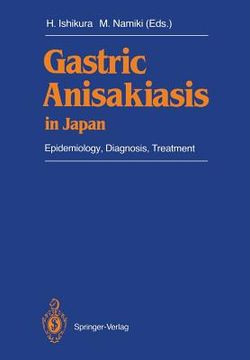Share
Gastric Anisakiasis in Japan: Epidemiology, Diagnosis, Treatment (in English)
Ishikura, Hajime ; Namiki, Masayoshi (Author)
·
Springer
· Paperback
Gastric Anisakiasis in Japan: Epidemiology, Diagnosis, Treatment (in English) - Ishikura, Hajime ; Namiki, Masayoshi
$ 52.09
$ 54.99
You save: $ 2.90
Choose the list to add your product or create one New List
✓ Product added successfully to the Wishlist.
Go to My WishlistsIt will be shipped from our warehouse between
Friday, June 14 and
Monday, June 17.
You will receive it anywhere in United States between 1 and 3 business days after shipment.
Synopsis "Gastric Anisakiasis in Japan: Epidemiology, Diagnosis, Treatment (in English)"
The larvae of Anisakis, whose adult form lives on sea mammals such as whales, seals, and dolphins, are parasitic upon many species of salt-water fish. When the final host animals eat paratenic hosts, the larvae grow to adulthood in the hosts' stomach. However, when hu- mans eat these infested fish, the larvae die instead, causing a disease called anisakiasis. In 1960, in the Netherlands, van Thiel et al. found a worm in the intestinal wall of a patient who had eaten raw herring and had suffered symptoms of acute abdomen. The impact of this report was tremendous among Japanese parasitologists because of the Japanese habit of eating raw fish. In 1964, the Special Research Group from the Ministry of Education was established to investigate the disease, stimulating progress in the study of anisakiasis. Three types of worm, Anisakis simplex larva (previously known as Anisakis larva type I), Anisakis physeteris larva (Anisakis larva type II), and Pseudoterranova decipiens larva type A, are believed to cause anisakiasis. As many as 165 kinds of fish and squid in the seas near Japan are hosts to Anisakis simplex, and 9 species are hosts to Pseudoterranova decipiens larvae. Contra caecum has experimentally been observed to invade the gastrointestinal tract, but no infection by this larva has been reported in humans. A case of infection by Pseudoterranova decipiens type B has been described. In Japan, the name Terranova decipiens (Shiraki 1974) has been adopted instead of Phocanema decipiens (Mozgovoi 1953).

